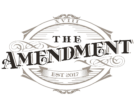Introduction
The 1920s was an era of jazz, glamour, and societal change. As Prohibition attempted to stifle alcohol consumption, Americans found new ways to indulge. Speakeasies—hidden, illicit bars—sprang up nationwide, inviting patrons to dance, drink, and defy the law. In this blog, we’ll explore the rise of these secret establishments, what they were like, and how they shaped American culture.
1. Prohibition and the Rise of Speakeasies
Prohibition took effect in 1920 with the 18th Amendment, which banned the manufacture, sale, and transport of alcohol. What had been intended to curb crime and “clean up” society instead encouraged a surge in underground activities, turning alcohol consumption into a thrilling act of defiance. This was when the term “speakeasy” came to describe hidden bars where patrons could discreetly enjoy alcohol.
2. The Hidden Life of a Speakeasy
Operating under secrecy, speakeasies often hid in plain sight behind ordinary storefronts or in basements. To gain entry, patrons needed a password or invitation, and they had to know how to “speak easy” to avoid arousing suspicion. Many of these establishments were outfitted with false walls, hidden doors, and emergency exits to protect both the patrons and the establishment from police raids.
3. The Speakeasy Experience: Jazz, Cocktails, and Glamour
Inside, the atmosphere was lively and unapologetically glamorous. Jazz filled the air as people danced the Charleston, and bartenders crafted cocktails to mask the taste of poorly-made alcohol. This was the golden era for cocktails like the Bee’s Knees and the French 75, made with gin or bootlegged whiskey. Women embraced new freedoms, dancing in shorter dresses and bobbed hair, embracing a liberated culture that contradicted Prohibition’s intent.
4. The Role of Organized Crime
The demand for alcohol gave rise to bootlegging and organized crime, as gangsters controlled the supply of illegal liquor. Figures like Al Capone became household names, running extensive networks of speakeasies, smuggling operations, and bribes to keep their businesses thriving. Crime syndicates became deeply woven into the fabric of American society during Prohibition, leading to increased violence but also a darker allure that complemented speakeasy culture.
5. Speakeasies’ Cultural Impact
While Prohibition ended in 1933, the cultural impact of speakeasies endured. They became symbols of rebellion, independence, and glamour, influencing the music, fashion, and social habits of the time. Many American cities now celebrate this rich legacy by preserving original speakeasy sites, ensuring that the spirit of the 1920s continues to inspire.
